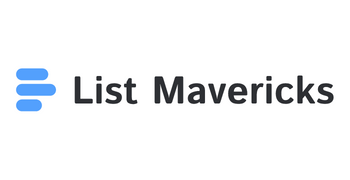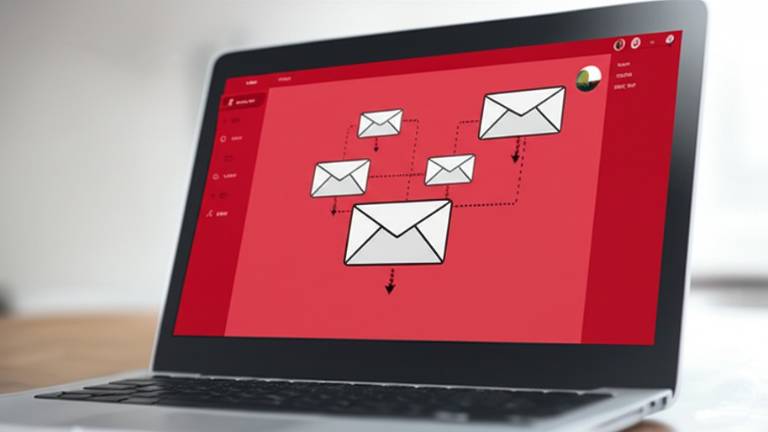As a B2B service provider, you know marketing is key to success. But with so much online noise, cutting through it can feel impossible. This is where cold email outreach comes in, offering a direct line to potential customers.
Many see cold emails as spam. This guide will transform that view. You’ll learn how to use cold email outreach ethically and effectively, turning cold leads into warm connections.
Understanding Cold Email Outreach
Cold email outreach involves sending emails to prospects you haven’t contacted before. The goal is to introduce your service, spark interest, and start a conversation.
Think of it as a virtual handshake. It requires finesse. A poorly executed campaign can land you in the spam folder, damaging your sender reputation.
Why Cold Email Outreach Matters
Some think cold outreach is dead, and using multi-channel campaigns can boost responses. However, 80% of buyers prefer email. Cold emailing allows personalized outreach at scale, more so than a cold call.
Despite inboxes overflowing, a good cold email can cut through the clutter. The average professional receives over 100 emails daily. A personalized message catches the eye.
With good cold email software, your personalized emails will reach the right people. Cold email outreach helps you boost lead generation and connect with your ideal customer profile. It’s more focused than a regular email campaign which targets subscribers. If your average reply rate is around 8.5%, then cold email outreach could be a game-changer.
Crafting the Perfect Cold Email
Your cold email’s success hinges on several key factors. Avoid blasting generic messages.
Create targeted, personalized content. The right message grabs attention and encourages replies. Personalize every message to make your ideal customer feel special.
Subject Lines: The First Impression
Subject lines are your first impression. Aim for conciseness and intrigue, according to a study from MarketingLand that showed ideal subject line length for email.
Personalize the email subject line if you can. Consider mentioning something about the recipient’s company. A six to 10 word subject typically works best.
Opening Lines: Making a Connection
Instantly grab the reader’s attention with your opening line. Get right to the point, there’s no time for small talk in sales.
Reference a shared connection. Consider a recent achievement of theirs, or a piece of their work you enjoyed.
Show genuine interest and offer real value right from the start, instead of pushing for the free trial or demo up front.
Body Content: Providing Value
Skip the fluff and respect your prospect’s time. Focus on benefits. Show value.
Get to the point. Highlight your service’s key benefits, such as website improvements or digital marketing help.
Focus on solving challenges. Show, don’t just tell, using examples. Share case studies.
Call to Action: Guiding the Next Step
A strong call to action guides the reader. Make it clear and concise.
Suggest a reply, a call, or link your calendar for booking. Keep it simple. Ensure your email signature includes ways to get in touch with you. Check to ensure any new links have a working redirect or proper response code.
Best Practices for Cold Email Outreach
Keep your outreach relevant to avoid spam. Follow best practices.
Align your emails with what your target audience expects. This boosts your response rates and overall results. Cold email marketing takes testing to find your niche and increase email campaign results over time. It may take some A/B testing and testing multiple email templates before finding something that works.
Warm Up Your Email Account
Don’t immediately send large email blasts from a new email account. This often leads to a high bounce rate and damages your sender reputation. If you find there are many invalid addresses after sending cold emails to email accounts that looked active, there could be bounces. Make sure there is ongoing list clean-up with follow up emails after the initial ones sent out, and that all contact info like full name and phone numbers are up to date. Verify any updates using third-party platforms that have integrations.
A/B test and test subject lines regularly and avoid adding recipients too quickly. Instead, warm up your account. Tools like TrulyInbox automate this process.
Verify Email Addresses
Accurate email lists are crucial. Clean your email lists to keep bounce rates low and response rates high. Cold emails will go out smoothly.
Services like Hunter.io and Snov.io verify email addresses. Tools like this and many cold email marketing services have unlimited plans at times or even free trials. Keep the bounce rate to a minimum, removing incorrect emails from your email list regularly.
Personalize With Video (If Relevant)
Video can personalize your outreach and set you apart. Use video strategically and thoughtfully.
Tools like Sendspark integrate with email platforms. They can foster a human connection. Personalized video isn’t always a game changer though, test any additions thoroughly. Ensure they enhance engagement before scaling usage, to keep response rates climbing and maximize clickthrough rates. Test with email send frequency.
Follow Up Strategically
Persistence is important. Send a few follow-up emails after sending cold emails. Create a respectful sequence, perhaps once every 3-4 days.
Most sales don’t happen on the first try. Most sales reps stop after four attempts, yet 80% of prospects need multiple follow-ups. Your follow up strategy and pricing plans need alignment.
Use a Reputable Cold Email Platform
A good email platform automates tasks, ensures high deliverability, and gives you valuable analytics. There are plenty of email tools to improve conversion rates and ensure email sending capacity.
Choose from many good options, like GMass or other cold emailing tools, especially for high-volume campaigns. Some cold email marketing tools are ideal when sending a ton of email messages or email broadcasts.
Cold Email Outreach: Turning Cold Leads into Warm Connections
Effective cold email takes planning and testing. Refine your process as you go. Consider using social media as part of multi-channel marketing for additional social proof, though most leads close via email so don’t lose focus. The following steps will help you create successful sequences.
- Define your Ideal Customer Profile (ICP): Know your target audience, focusing on pain points, goals, and industry. Determine your pricing and email list of prospects in similar fields with a target market overlap.
- Build a Targeted Lead List: Prioritize quality. Use tools like Hunter.io or Snov.io to find and validate emails and limit bounces.
- Craft Compelling Subject Lines: Keep them short, enticing, and intriguing. Pose questions to encourage opens and a response, since we all strive for an effective follow-up.
- Personalize Every Email: Use mail merge fields and dynamic content for each recipient. Too much generic text can lower engagement. Highlight recipients’ work. Show your industry knowledge by focusing on their pain points.
- Keep It Concise and Clear: Avoid long, cluttered emails. It helps your lead list flow.
- Use a Professional Tone: Be empathetic but avoid excessive formality.
- Follow Up Consistently: Sales rarely close on the first touch. Automate a personalized follow-up sequence. Platforms like MailShake highlight this in lesson #6. Timely follow-ups can significantly boost client conversion. Quick replies are expected on platforms with frequent interaction, so have email support available via your professional email.
FAQs about cold email outreach
What is cold email outreach?
Cold email outreach involves sending emails to people or businesses you haven’t previously contacted. The goal is to get leads, build relationships, or promote products and services.
Is cold email outreach legal?
Yes, generally, but follow guidelines like the U.S. CAN-SPAM Act. This covers identification, opt-out options, and honest subject lines.
Be aware of other laws where you and recipients live, such as GDPR laws if any individuals on your email list live within the EU. Adhering to regional guidelines and local rules ensures a smooth and ethical outreach strategy. Consider working with a customer support team if unsure what local regulations your target audience may be subject to based on their locations, especially for higher-volume lead lists and prospects. Make sure any outreach for new potential customers goes to an active email address.
What are examples of cold emails?
Cold emails vary widely. They might be sales-related (introducing a product), partnership-focused, or simply for networking among professionals in similar niches.
How do I get cold outreach emails?
Prospecting tools like Hunter.io, Snov.io, and Voila Norbert can help. Use sites like LinkedIn and industry-specific associations, where contact info is readily available. Check association member directories. See what competitors or comparable companies list on their websites as contact info, or if their team members make it public. Sometimes using cold email templates just takes checking sites and even competitor email addresses to see what they do for cold emails.
Conclusion
Cold email outreach is a strong way to connect with potential clients and build profitable relationships. Prioritize quality and value. With the right strategy, you can successfully reach potential clients, increase conversion rates, and enhance engagement metrics for profitable relationships that last.
Now, take what you’ve learned and give it a shot. Your inbox awaits.

